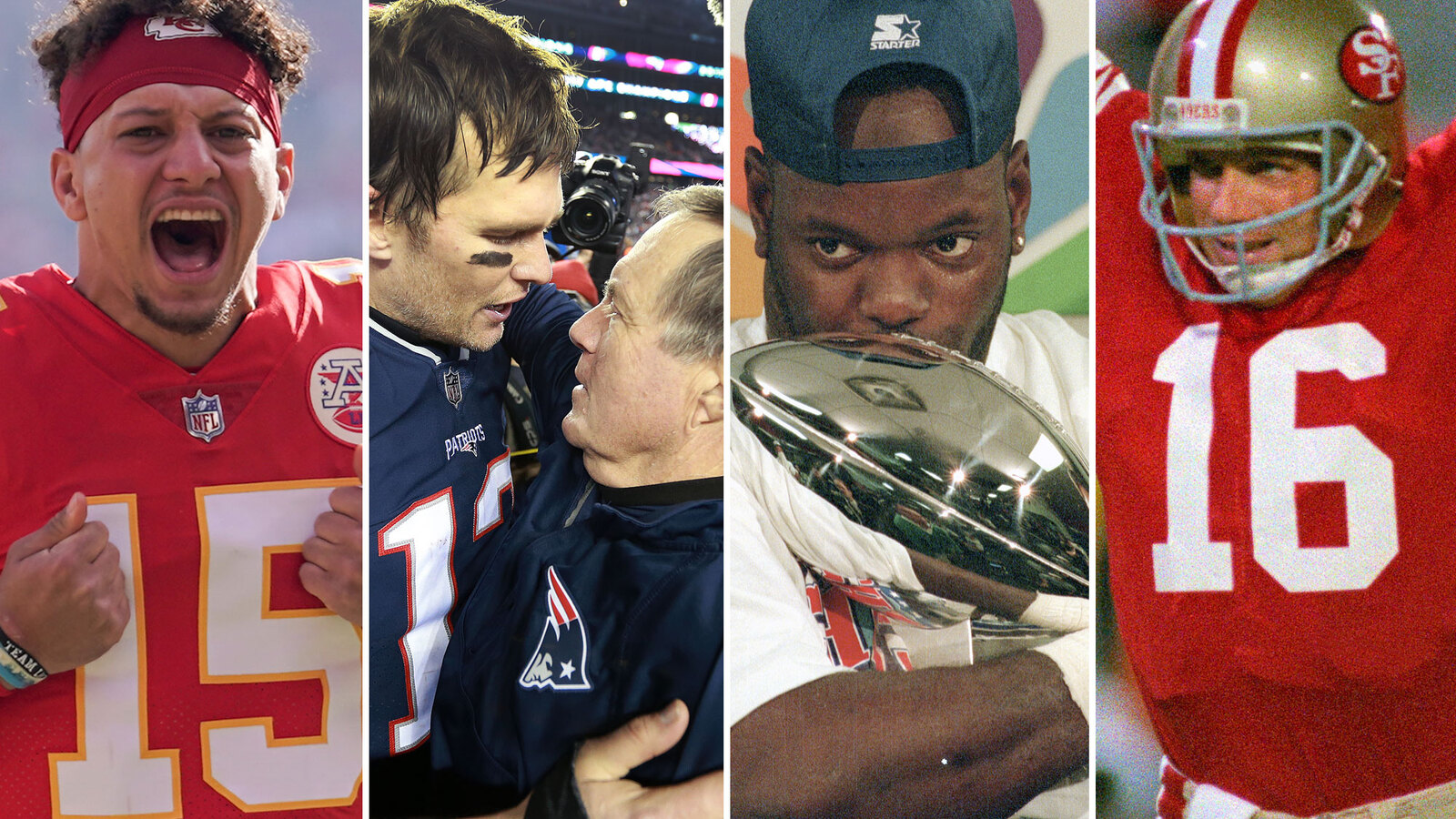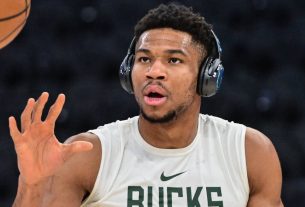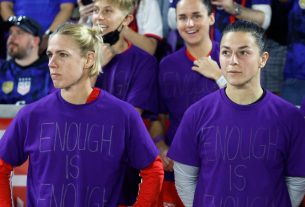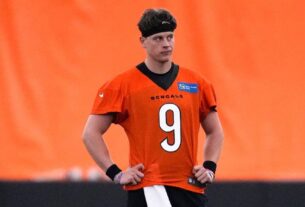The Chiefs’ seven straight division championships are bettered by only one team. Still, the NFL has seen a number of franchises author storied stretches without stringing together that many divisional crowns. Here are the most dominant teams to come through the league since the 1970 merger established the modern NFL’s divisions.
1 of 25
Miami Dolphins, 1970-74
Focus on Sport/Getty Images
Two 1970 transactions made an immediate impact on the Dolphins, then a struggling fifth-year franchise. The team sent the No. 3 overall pick to the Browns for future All-Century wideout Paul Warfield and hired Don Shula from the Colts. The Shula move led to Miami surrendering a first-round pick, but the results were immediate. Miami made the next five playoff brackets, went 57-12-1 in that span, won four AFC East titles and ventured to three Super Bowls. The Dolphins’ Larry Csonka-led ground game ranked first in rushing from 1971-74, and it took an epic Raiders effort to end the Dolphins’ three-peat quest. Miami went 17-0 in 1972, as you may have heard. Its 1973 team was even better.
2 of 25
Dallas Cowboys, 1970-85

Focus on Sport/Getty Images
The salary cap largely prevents extended runs like this now, but the Cowboys managed to be one of the league’s best teams for 20 years. Beginning with four consecutive pre-merger playoff runs, the Cowboys peaked with their Doomsday defense flanking Roger Staubach. It took a bit of time for the legendary QB to fully take the reins, as he lost them in 1972 despite piloting Dallas to a Super Bowl VI win in 1971. But the Cowboys ended up making five Super Bowls in the ’70s, winning two, and going to 10 NFC championship games from 1970-82. Tom Landry’s team made four of those journeys to NFC title games without winning the NFC East, and the Cowboy brand remained strong years after Staubach’s retirement.
3 of 25
Oakland Raiders, 1970-85

Jamie Squire/Getty Images
Although the Raiders’ stay among the NFL’s aristocrats involved two coaches (John Madden, Tom Flores), some of the famed players (Gene Upshaw, Art Shell, Cliff Branch) were part of both their great teams from the 1970s and in the early ’80s. Oakland built an O-line that, for a few seasons housed four Hall of Famers, and while the Dolphins and Steelers reached the mountaintop first, the Raiders persevered and outlasted both. Like the Cowboys, the Raiders began their climb before the merger. From 1970-83, the Daryle Lamonica-, Ken Stabler- and Jim Plunkett-quarterbacked teams voyaged to eight AFC title games and three Super Bowls.
4 of 25
Pittsburgh Steelers, 1972-79

George Gojkovich/Getty Images
Chuck Noll and Steelers draft guru Dick Haley assembled a superpower that accomplished the most during a fierce decade for the AFC. Pittsburgh drafted 10 Hall of Famers from 1969-74, and both prevailed in a defense-powered era (pre-1978) and won the decade’s final two Super Bowls following the “Mel Blount Rule” aimed at unshackling pass attacks. Franco Harris’s “Immaculate Reception” put the Steelers on the map, and their vaunted Steel Curtain defense provided a sturdy safety net during Terry Bradshaw’s ascent. The Steelers made eight straight playoff berths from 1972-79, earned seven AFC Central titles, played in six AFC title games, and won four Super Bowls. It is difficult for a dynasty to accomplish more.
5 of 25
Minnesota Vikings, 1970-78
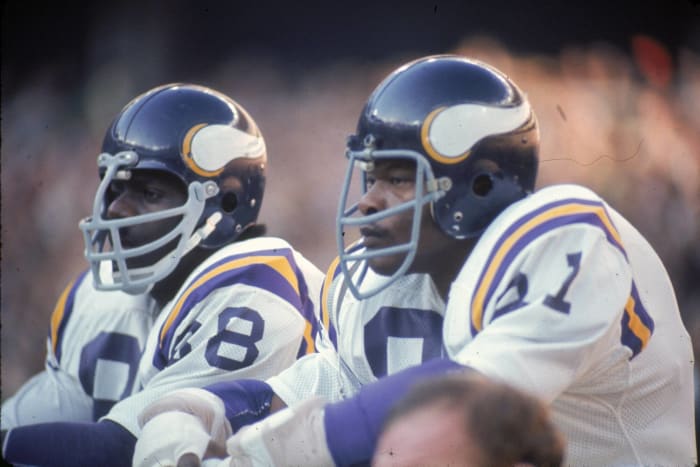
Clifton Boutelle/Getty Images
Keyed by a defensive line that submitted a lengthy stretch of dominance, the Vikings began their charge just before the 1970 merger by going 12-2 en route to Super Bowl IV. Despite lacking a top-end quarterback in the early ’70s, Minnesota got by. No. 1-ranked defenses powered the Vikes to a 23-5 record during Fran Tarkenton’s final two Giants seasons. After reacquiring Tarkenton in 1972, the Vikings jumped a level in the NFC’s arms race and qualified for three of the next five Super Bowls. Tarkenton and the Purple People Eaters did not win any of those games, but they claimed eight NFC Central conquests in nine years from 1970-78 and sent six players to Canton.
6 of 25
Los Angeles Rams, 1973-80
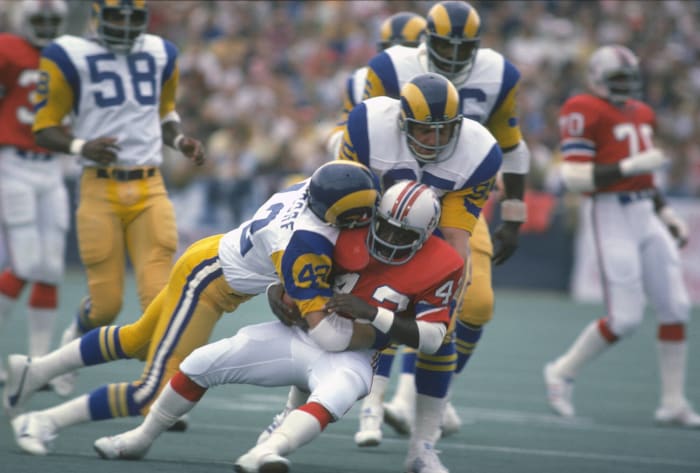
Focus on Sport/Getty Images
The Rams lacked the QB presence the other great teams of this era possessed, but as they cycled through several passers, division crowns piled up. Only the Patriots have amassed a longer division-winning streak. The Rams’ division wasn’t good, but they still did work in the playoffs. Chuck Knox’s teams vied for the NFC title belt from 1974-76, beating the Cowboys and Vikings once apiece during that span. L.A. lacks the Hall of Fame representation Dallas and Minnesota have, with only Jack Youngblood, Jackie Slater, and Tom Mack enshrined from the post-Fearsome Foursome years. The team had three playoff journeys and Super Bowl XIV post-Knox, pushing the Steelers that night despite a 9-7 record.
7 of 25
San Diego Chargers, 1979-82

Focus on Sport/Getty Images
This brief but memorable Chargers ignition delivered dazzling highlights and laid the groundwork for future passing attacks. Taking full advantage of the NFL’s aerially geared rule changes, Don Coryell — hired during the 1978 season — unleashed Dan Fouts. Without this four-year span, the bearded QB does not sniff the Hall of Fame. As the Air Coryell Chargers’ pilot, Fouts enjoyed elite weaponry — Kellen Winslow, Charlie Joiner, John Jefferson, Wes Chandler — and lifted the Bolts to three division wins from 1979-81. Iffy Bolts defenses could not hold up in the playoffs, though San Diego glided to two AFC title games — 1981’s “Freezer Bowl” coming after the NFL’s signature shootout.
8 of 25
San Francisco 49ers, 1981-98

George Gojkovich/Getty Images
During this 18-year period, the 49ers won fewer than 10 games in just one season — a strike-shortened 1982 slate. They successfully passed both the HC and QB batons, going from Bill Walsh to George Seifert and Joe Montana to Steve Young. Walsh’s 1979 San Francisco arrival ignited a downtrodden franchise, and his 1985 and ’87 trades for Jerry Rice and Young led to the team remaining in place at or near the NFL’s summit for nearly two decades. The 49ers won 13 NFC West titles during this stretch, and Walsh’s cutting-edge West Coast Offense produced two Hall of Fame QBs. The team went 5-for-5 in its Super Bowl appearances. The 49ers defense during this span: also good, as four Canton inductees attest.
9 of 25
Washington, 1982-92

Wally McNamee/CORBIS/Corbis via Getty Images
We come to the NFC>AFC portion of this list. Washington was a mainstay before and during the NFC’s 13-season Super Bowl streak. Joe Gibbs’ team made four more Super Bowls during his first go-round as head coach. Gibbs’ first two came with the Joe Theismann-John Riggins pairing (with a heavy assist from The Hogs); Washington’s second two were more interesting. Theismann’s gruesome 1985 injury did not halt Washington, which made five playoff cameos from 1986-92. The NFC East team posted Super Bowl blowouts with Doug Williams and Mark Rypien at the controls, with the ’91 team (first in offense, second in defense) being among the best in NFL history.
10 of 25
Chicago Bears, 1984-91

Jonathan Daniel/Getty Images
The Bears’ best post-1940s era veers more toward “what if?” than their NFC contemporaries. Injuries to Jim McMahon largely led to Chicago playing in just one 1980s Super Bowl. Some of the other Bears teams in the ’80s should not be slept on. Buddy Ryan’s aggressive 46 defense took the NFL by storm in 1984, recording a record 72 sacks that year. The ’86 defense also outpaced the famed ’85 group statistically. The 1988 team won “The Fog Bowl” and made the NFC title game. McMahon missed two of these playoffs with injuries and was traded in 1989. But Mike Ditka’s 1985 squad featured a still-elite Walter Payton, went 18-1 and outscored its playoff opposition 91-10. The Bears made that year count.
11 of 25
New York Giants, 1984-90

Focus on Sport/Getty Images
Employing a Hall of Fame coach and a defensive coordinator on the way to extraordinary heights, the Giants carved out a place in this NFC gauntlet. Bill Parcells battled early-1980s firing rumors and built one of the great defenses in NFL history — based around the best defensive player ever. Lawrence Taylor is the most recent defender to claim MVP honors, doing so in a 1986 season in which the Giants went 14-2 and stampeded past all three playoff foes. The Giants had the most success against Joe Montana’s 49ers, eliminating them in 1985, ’86 and ’90. The final matchup stopped San Francisco’s three-peat bid and led to Bill Belichick’s defense containing the Bills. Parcells and Belichick both left in 1991.
12 of 25
Buffalo Bills, 1988-96

Focus on Sport/Getty Images
The Bill Polian-Marv Levy pairing turned around a team that had fallen off in the mid-1980s, and although the Bills’ four straight Super Bowl losses make these years somewhat infamous, no team has dominated a conference like Buffalo. Jim Kelly did not begin his Bills career until the USFL folded, and Kelly’s wingmen emerged in Rounds 2 (Thurman Thomas) and 4 (Andre Reed). The trio, along with Bruce Smith and Cornelius Bennett, drove Buffalo to six AFC East crowns from 1988-95. The Bills defeated John Elway, Dan Marino and Joe Montana (partial participation) for AFC supremacy, and their backup QB (Frank Reich) led the greatest comeback in playoff history. The NFC’s Super Bowl representatives were just better.
13 of 25
Dallas Cowboys, 1991-99
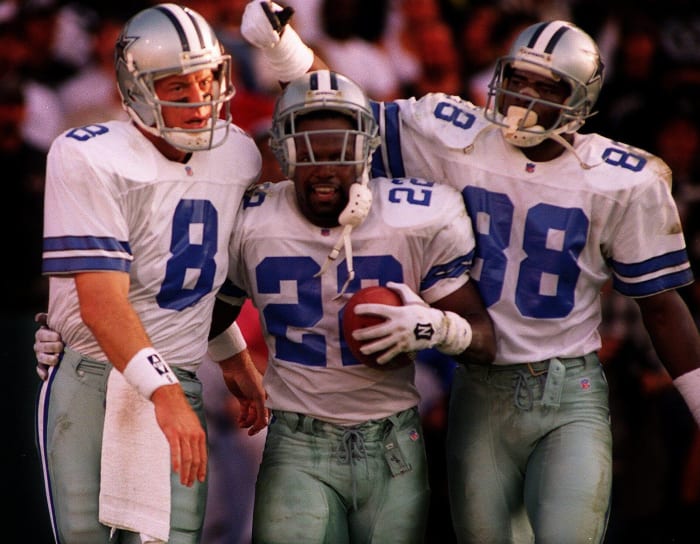
Karen T. Borchers/MediaNews Group/Mercury News via Getty Images
Even in a steep decline in the late ’90s, the Cowboys stayed playoff-relevant. Their best stuff obviously came years earlier, when Jimmy Johnson assembled one of modern football’s premier nuclei. The 1989 Herschel Walker trade brought Emmitt Smith and other starters, kickstarting a rebuild that soon took over the NFL. The ex-Miami Hurricanes honcho backed up his talk with Troy Aikman and Michael Irvin — with considerable assistance from the best O-line in modern NFL history — joining Smith in powering the team to three Lombardis in four years. The Cowboys withstood the Johnson-Jerry Jones 1994 breakup and were still good enough to threaten a stacked 49ers team before holding off the Packers’ rise a year later.
14 of 25
Green Bay Packers, 1993-98

Lutz Bongarts/Bongarts/Getty Images
Although the Cowboys made the Packers wait their turn, it was a pretty good turn. GM Ron Wolf made impact moves in the 1992 and ’93 offseasons — swindling the Falcons for Brett Favre and winning the Reggie White free agency sweepstakes, convincing the all-time great to head to the NFL’s smallest city — to eventually swing the NFC’s power balance. Favre shook off Sterling Sharpe’s injury-induced retirement and won the next three MVPs, while White was 6-for-6 in Pro Bowls as a Packer despite being 37 in the last of those seasons. White took over Super Bowl XXXI, and while the double-digit underdog Broncos upset the Pack a year later, the team still gets credit for ending the Cowboys-49ers duopoly.
15 of 25
Denver Broncos, 1996-98

DOUG COLLIER/AFP via Getty Images
The shortest span on this list, as 1999 events brought an abrupt end to the Broncos’ near-dynasty. Mike Shanahan began his third stint in Denver in 1995, rejuvenating John Elway’s career. The legendary QB talent’s best statistical years came under Shanahan in his late 30s and with Terrell Davis zooming through holes created by the Broncos’ zone-blocking scheme. Also rostering Hall of Famers Shannon Sharpe and Steve Atwater, Denver went 39-9 from 1996-98. The record would be better had Shanahan not rested starters in ’96. Following an upset loss to the Jaguars, the Broncos claimed back-to-back titles — the second of which came after a bid at an unbeaten season. Elway’s retirement and Davis’ ACL tear ended the party.
16 of 25
St. Louis Rams, 1999-2004
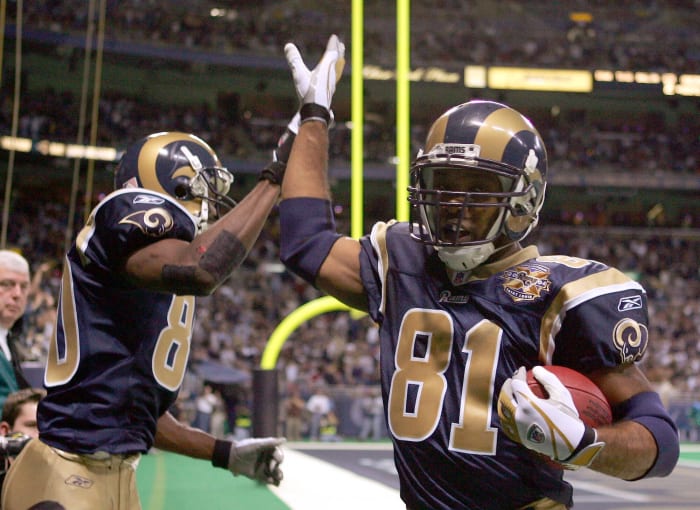
Elsa/Getty Images
This can be classified as a pop-up powerhouse, but Mike Martz and Marc Bulger did lead the Rams to a 12-4 record in 2003 — ending in a double-overtime loss to the Panthers. Although the Rams won a playoff game in 2004, the Steve Smith walk-off began St. Louis’ descent. As this space stumped for in the past, the Kurt Warner story did become a movie (with oddly detailed Arena Football scenes). But the 1999 Super Bowl upstarts also equipped their QB find with Marshall Faulk (via trade) and Torry Holt (Round 1). The Warner-Faulk-Holt-Isaac Bruce express posted 13-3 and 14-2 slates in Super Bowl seasons, and a Warner injury limited the 2000 Rams (10-6). The team still accomplished plenty before Warner’s mid-career swoon.
17 of 25
Philadelphia Eagles, 2000-10

Jamie Squire/Getty Images
Even after their NFC championship four-peat and Terrell Owens’ 2005 implosion, the Eagles qualified for four more playoff brackets and fell just short of Super Bowl XLIII. Reid’s best Philly work, of course, came in the early aughts. The second-best QB to play under Reid, Donovan McNabb, guided three receiver-deficient teams to the conference championship round. McNabb went up a level in 2004, with Owens on his best behavior, and the QB once booed on draft day made six Pro Bowls. The Eagles fell short in four of their five NFC title game bids under Reid but advanced to Super Bowl XXXIX without Owens (broken leg). Reid’s Eagles are the NFC East’s most consistent 21st-century team (six crowns).
18 of 25
Indianapolis Colts, 1999-2010
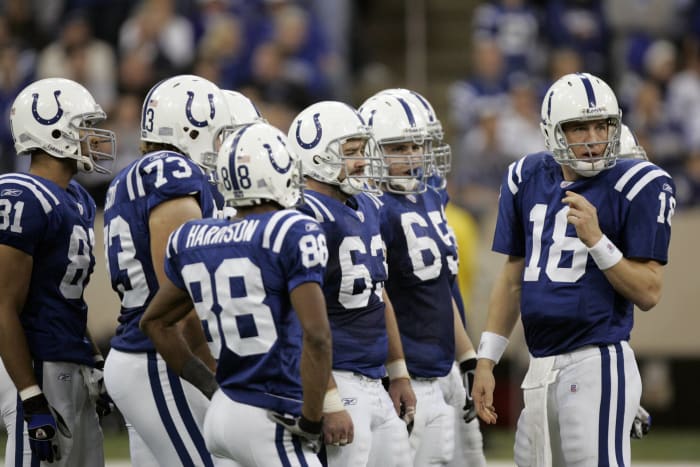
Mark Cowan/Icon Sportswire
Although Jim Mora’s “Playoffs? You kiddin’ me?” season is sandwiched in here, the Colts made the postseason in every other year from 1999-2010. The Colts’ 1997 finish gave them access to the league’s ultimate franchise-changer. While Indianapolis’ Peyton Manning-centric teams fell short in many postseasons, they were essentially an automatic Super Bowl threat with the Hall of Famer under center. The Colts hiring of Tony Dungy in 2002 preceded a record-setting run of eight straight 12-plus-win seasons, producing two Super Bowl appearances. Throwing to Marvin Harrison and Reggie Wayne, Manning collected four of his record five MVP honors as a Colt.
19 of 25
New England Patriots, 2001-19

Jim Davis/The Boston Globe via Getty Images
The outlier here, the Patriots, navigated the salary cap to somehow outpace past dynasties’ ring counts with longevity unrivaled in this era. A sixth-round pick in 2000 and a second-rounder in 2010 (with some help from a 2007 fourth-rounder that became Randy Moss) created this century’s defining team. Tom Brady is not the most talented QB to come through the NFL. Still, he both maximized his advantages — Belichick’s defensive safety net and Rob Gronkowski, the NFL’s most dominant tight end — to lap his peers in Super Bowl titles and appearances. The Brady-Belichick coalition won 17 AFC East crowns and appeared in more conference title games (12) than all but three franchises since the merger.
20 of 25
Pittsburgh Steelers, 2004-10

Icon Sportswire
The Steelers did not offer spirited Super Bowl title defenses, missing the playoffs in 2006 and ’09, but they appeared in three Super Bowls in a six-season span. Only a handful of teams have matched that Bill Cowher-Mike Tomlin achievement and only a handful of defenses have a claim to bettering the work Pittsburgh did during its peaks in this span. Ben Roethlisberger’s arrival keyed the Steelers’ mid-2000s resurgence, but Dick LeBeau’s 2004 return was also pivotal. LeBeau’s troops — led by Troy Polamalu and James Harrison — stood tall in three AFC championship games, and the Big Ben-Santonio Holmes connection gave the Steelers an NFL-record sixth Lombardi.
21 of 25
Green Bay Packers, 2009-16
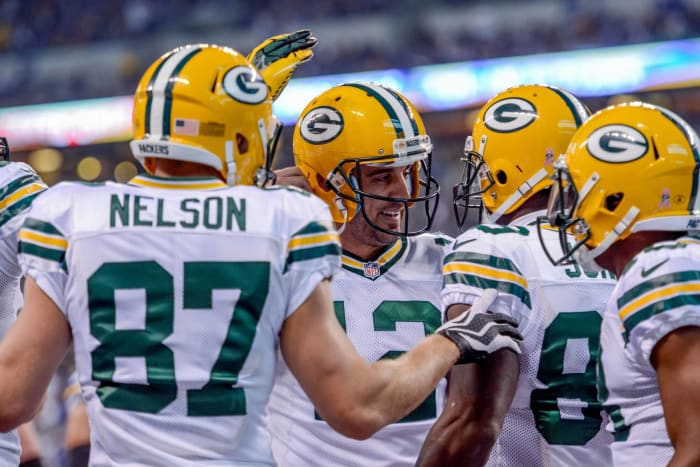
MSA/Icon Sportswire
Green Bay’s transition from a Hall of Fame QB to a future Hall of Famer needed just one transition year. After Brett Favre’s messy 2008 exit, the Packers were a mortal lock for playoff entry. The Pack soared to eight straight brackets from 2009-16; only the Patriots, Colts and Chiefs match that this century. Rodgers won the first two of his four MVPs in this timeframe, which came after his 2010 playoff surge gave Titletown a fourth trophy. Mike McCarthy and the Packers’ conservative roster-building blueprint took heat during the back end of this period, which featured some agonizing playoff exits — none more so than 2014’s collapse in Seattle — but Rodgers kept the machine rolling through his early prime.
22 of 25
Denver Broncos, 2011-15

Robin Alam/Icon Sportswire
After one of the weirdest odysseys to the divisional round in league history, the Broncos did not buy into a fool’s-good 2011 season. A roster housing Von Miller and Demaryius Thomas at that point led to Denver attracting Peyton Manning and winning what still might be the league’s premier free agency derby. Manning immediately lifted a middling team to the penthouse level, and the Broncos went 50-14 from 2012-15. The aging QB broke records and earned two more All-Pro nods despite drastic post-surgery limitations. After the Seahawks broke John Elway’s first blueprint, the GM assembled a crushing defense that provided a diminished Manning plenty of support en route to the franchise’s third title.
23 of 25
Seattle Seahawks, 2012-20
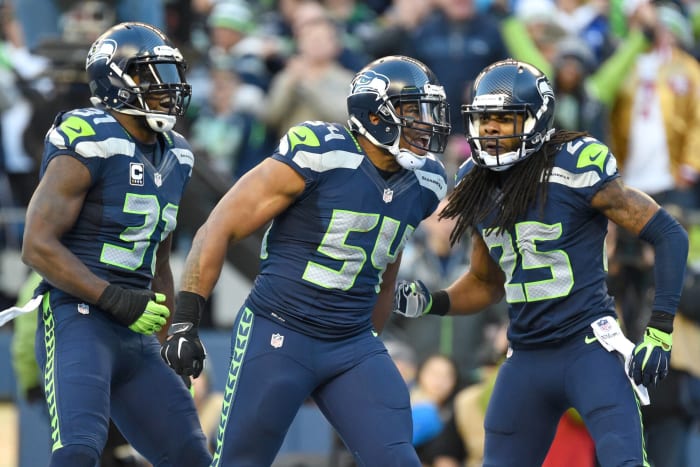
MSA/Icon Sportswire
This nucleus evolved from one geared around the 2010s’ best defensive talent array and a rising QB talent to a Russell Wilson-dependent cast with less stellar backing. Both parts offered quality, but the Seahawks’ franchise peak came when Bobby Wagner, Earl Thomas, Richard Sherman, and Co. supplemented Wilson’s rookie contract. These Seahawks are the only team since the merger to rank first in scoring defense in four straight seasons (2012-15), and their 2013 team — they of a 43-8 rout of the Broncos — is one of the 21st century’s finest. After the Patriots (feat. an eternally debated play call) derailed the Hawks a year later, Wilson’s progress helped Seattle play in five more postseasons.
24 of 25
Kansas City Chiefs, 2013-22
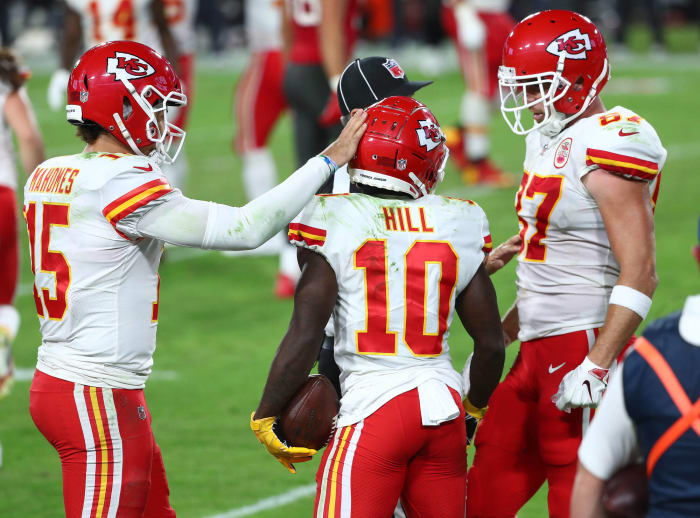
Kim Klement-USA TODAY Sports
Andy Reid’s defining work has come with Patrick Mahomes, but his 2013 effort — turning a 2-14 team into an 11-5 playoff squad — should not be overlooked when discussing his case as one of the greats. Reid and Alex Smith partnered for four playoff sojourns, though the latter’s limitations kept the Chiefs’ ceiling low. Mahomes turned the plans into a skyscraper, submitting arguably the best five-year QB stretch to start a career in NFL history. Travis Kelce and Tyreek Hill offered unmatched wingmen for the Kansas City deity, who ran the Chiefs’ AFC West title count to seven — to go with a record four straight home AFC championship games — and snapped a 50-year Super Bowl drought.
25 of 25
New Orleans Saints, 2017-20

Chuck Cook-USA TODAY Sports
The Saints’ late-2010s re-emergence may not age too well, but two pivotal plays are more responsible for that than the teams’ quality. Drew Brees remained in high gear throughout the 2010s, and the Saints supported the prolific passer with better defensive personnel. Michael Thomas and Alvin Kamara’s Big Easy entrances gave Brees top skill-position talents, and Sean Payton’s teams went 49-15 from 2017-20. Unfortunately, Marcus Williams’ Minneapolis misplay and perhaps the league’s defining officiating mishap occurring in the following year’s NFC championship game held the Saints back. This group was deprived of at least one Super Bowl, limiting its legacy.
Sam Robinson is a Kansas City, Mo.-based writer who mostly writes about the NFL. He has covered sports for nearly 10 years. Boxing, the Royals and Pandora stations featuring female rock protagonists are some of his go-tos. Occasionally interesting tweets @SRobinson25.
